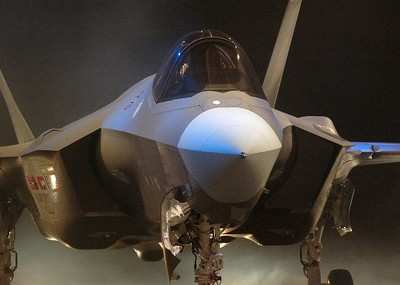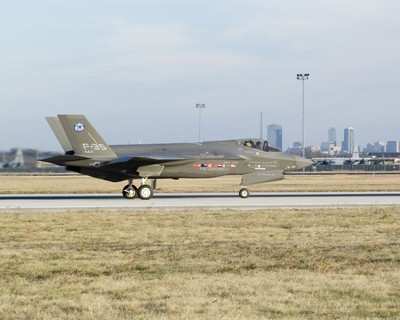Reserve Fund Nearly Depleted Following Software Redesign
In what could be viewed as a 'money vs. safety' compromise,
Lockheed Martin is seeking Defense Department approval to reduce
the number of personnel, test aircraft and flight tests for its
F-35 Joint Strike Fighter program, because it is over budget.

The project is now in a seven-year flight-test phase, and
Lockheed says it need to replenish a contractually required reserve
fund being depleted quickly due to reasons such as delays with
engineer's drawings, supplier cost increases, as well as work to
fix problems with the wing assembly and weight issues, according to
the charts and documentation given to the DoD by Lockheed
Martin.
"If there is no reserve, every time there is a problem you have
to go back to Congress and ask for more money. It looks really bad"
and might increase congressional skepticism about the program, said
Loren Thompson, an aerospace analyst and vice president of the
Lexington Institute.
A large amount of the funds have been spent on a redesign of a
critical electronic part that failed during the 19th sortie in May,
which resulted in the aircraft being grounded. Flights should be
resumed soon, officials said.

The original contract for the 12-year development and test phase
was about $20 billion. Part of that is the stipulation that
Lockheed Martin maintain a management reserve fund of about 10
percent of that amount, according to Bloomberg News.
The current reserve fund holds about $392 million of the
original $2 billion. Lockheed has said it would like to see it
brought back up to at least $1 billion. The reserve fund is usually
used to fix problems that arise during the test phase of
development.
As ANN has reported, the
multibillion dollar JSF is an ambitious program, and not only in
terms of money. The F-35 is the first military aircraft to be
produced by an international coalition of eight nations to design,
finance, build and sell the jet. This required sensitive
information sharing, investing large amounts of capital and working
together for the greater good.

It is designed with ground troop support capability and be
almost invisible to radar. At least 2,458 are scheduled for the
production phase.
Lockheed's proposal calls for removing at least two of the
14-plane program and about 700 testing sorties from the 5,000
planned for avionics, communications, radar and weapons integration
testing.
The company contends these tests can be conducted just as well,
and less costly, in ground simulators and a flying software
laboratory now flying on a Boeing 737.
Lockheed spokesperson John Smith said "if the unexpected
occurred," and the reserve were exhausted, "we would need to seek
additional funding. There's no plan to reduce the number of flights
intended to test the aircraft's basic flying qualities and
structural strength."
"We are, however, discussing whether our unprecedented
integrated laboratory infrastructure and our 737-avionics test bed
can logically allow us to reduce our `mission system' flight
testing," he said. These ground and flying test facilities "are
unprecedented in the history of fighter development," he said.
Thomas Christie was head of Pentagon testing from 2001-2005 and
was all for the original test program. He disagrees with Lockheed's
assertion.

"Unfortunately, too often the solution to staying on schedule
and under cost -- to include maintaining or building up management
reserve funds for the inevitable unforeseen problems -- is to
reduce test and evaluation," he said. "History is replete with the
consequences of this misguided thinking."
Air Force Assistant Secretary for Acquisition Sue Payton said
there has not been a decision as of yet on Lockheed's request, but
agrees their reserve account does need to be fattened a bit.
"When you run out of your management reserve, it's just like not
having any insurance and you break your leg: You're in a world of
hurt," she said. "I think we are doing a real bright thing to
figure out how we can regain some."
When the program was started in October 2001, cost estimates
were $233 billion. It is now projected to cost $299 billion,
according to Bloomberg.
 ANN's Daily Aero-Linx (04.13.24)
ANN's Daily Aero-Linx (04.13.24) ANN's Daily Aero-Term (04.13.24): Beyond Visual Line Of Sight (BVLOS)
ANN's Daily Aero-Term (04.13.24): Beyond Visual Line Of Sight (BVLOS) Airborne 04.09.24: SnF24!, Piper-DeltaHawk!, Fisher Update, Junkers
Airborne 04.09.24: SnF24!, Piper-DeltaHawk!, Fisher Update, Junkers Aero-News: Quote of the Day (04.14.24)
Aero-News: Quote of the Day (04.14.24) ANN's Daily Aero-Term (04.14.24): Maximum Authorized Altitude
ANN's Daily Aero-Term (04.14.24): Maximum Authorized Altitude






